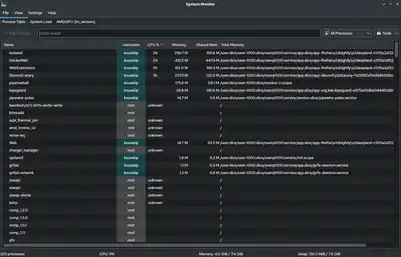Task manager
In operating systems, a task manager is a system monitor program used to provide information about the processes and applications running on a computer, as well as the general status of the computer. Some implementations can also be used to terminate processes and applications, as well as change the processes' scheduling priority. In some environments, users can access a task manager with the Control-Alt-Delete keyboard shortcut.

KDE System Guard, a task manager for KDE Plasma 5.
Task managers can display running services (processes) as well as those that were stopped. They can display information about the services, including their process identifier and group identifier.
Common task managers
- Activity Monitor, included in macOS
- Conky, for the X Window System
- htop, for the Unix shell
- KDE System Guard, included in KDE
- nmon, for Linux and AIX
- ps, for the Unix shell
- Task Manager, included in Windows
- tasklist, for DOS
- TaskManager, included in MorphOS
- top, for the Unix shell
References
- Savill, John (2008). The Complete Guide to Windows Server 2008. Pearson Education. ISBN 978-0-13-279758-0.
This article is issued from Wikipedia. The text is licensed under Creative Commons - Attribution - Sharealike. Additional terms may apply for the media files.